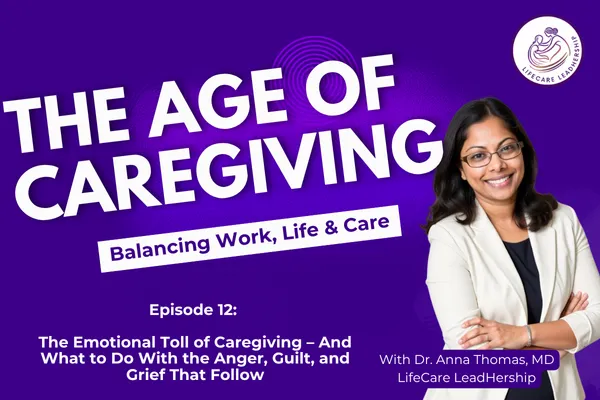
The Emotional Toll of Caregiving – And What to Do With the Anger, Guilt, and Grief That Follow
“You’re so strong.”
That’s what people say to caregivers.
But what they don’t see—and what many caregivers rarely say—is what that "strength" is actually made of.
Sometimes it’s anger.
Sometimes it’s grief.
Often, it’s guilt we don’t know how to name, let alone release.
If you’re a caregiver who looks like you're holding it all together on the outside but feels emotionally scattered, exhausted, or numb on the inside—this is for you.
Because caregiving isn’t just a set of tasks.
It’s an emotional experience that pulls you in all directions.
Why Caregiving Feels So Emotionally Heavy
On any given day, you might feel:
Grateful to be helping… and resentful that no one else is
Sad about your loved one’s decline… and numb from the repetition
Proud of all you manage… and guilty for every moment you fall short
This emotional contradiction is not dysfunction.
It’s normal.
But when it goes unacknowledged and unprocessed, it can lead to:
Burnout that doesn’t respond to rest
Emotional numbness or unpredictable outbursts
Strained relationships and a lost sense of self
Let’s talk about how to care for your inner world while you're caring for everyone else.
Step 1: Name What You’re Really Feeling
We don’t heal what we won’t name.
Before reaching for a strategy or solution, ask yourself:
What emotion is showing up for me today?
What keeps bubbling up that I’ve been trying to push away?
You might uncover:
Anger—at your siblings, at a broken healthcare system, even at your loved one for needing so much
Guilt—for snapping, for needing a break, for resenting the very person you care about
Grief—for who your loved one used to be, for what your life used to look like, for the version of yourself you barely recognize
These feelings don’t make you a bad caregiver.
They make you human.
Step 2: Use Micro-Rituals to Release and Reset
You don’t need an hour.
You just need a window.
Here are a few small rituals that help caregivers release emotion without guilt:
Voice memo journaling — record a 2-minute voice note while walking or driving
Quick prompt — “Today I feel... and I need...”
Evening reflection — “What do I want to leave here today?”
Silent space — sit quietly for 5 minutes and breathe without solving anything
These micro-rituals help prevent emotional buildup.
They give your feelings somewhere to land.
You don’t need to be a therapist.
You just need space to be honest.
Step 3: Lead With Boundaries, Not Emotional Suppression
This is where emotion meets action.
When emotions get suppressed, caregivers tend to:
Say yes when they want to say no
Snap at loved ones unintentionally
Numb out with distractions or overcommitment
Instead, try saying:
“I’m stretched thin today. I need a pause before I say yes to anything.”
“This week has been hard emotionally. I’m stepping back from a few tasks to reset.”
“I’m noticing a lot of emotion. I’m going to create space to feel it before I respond.”
That is not weakness.
That is emotional leadership.
Final Word
You’re not wrong for feeling too much.
You’re not weak for needing help.
You’re not alone in your emotional overwhelm.
You’re a caregiver.
You’re a leader.
You’re a human being.
And you deserve tools that help you feel again—without falling apart.
You’ve got this.
And I’ve got you.
Explore More from The Age of Caregiving™
🎧 Listen on Buzzsprout: https://www.lifecareleadhership.com/podcast
📺 Watch on YouTube: https://www.youtube.com/@ageofcaregiving
📝 Read more on our Blog: https://lifecareleadhership.com/ageofcaregiving
LINKS
Workshops: https://lifecareleadhership.com/workshops
Courses & Coaching: https://lifecareleadhership.com/programs
Book: Balancing Care While Working: https://lifecareleadhership.com/balancingcarebook
Book: Dementia Care Confidence: https://www.lifecareleadhership.com/dementia-book
For organizations & Leaders: https://lifecareleadhership.com/corporate-solutions
The views and opinions expressed in this post are solely my own and do not reflect the views of any past or present employer of Dr. Thomas. This content is for educational and informational purposes only and is not intended as medical or legal advice.
